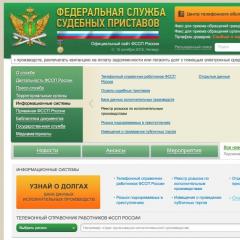How to cross documents?
Each structural division of the enterprise, what kind of dimensions it was not, at least once faced with the need to binder documents.
It becomes necessary for leaving the archive, and for some legal procedures. There are several methods for performing the binder. We will be discussed below.
Form
Any enterprise for the year forms a certain amount of documents, some of which, after the expiration of storage time, must go to the archive. This includes documents that have already been executed, as well as documents related to the staff of the enterprise. According to the current practice, cases are transferred to the archive, a year after they are completed in the office work.
The duty to transfer documents is entrusted to the service staff responsible for the workflow, or is entrusted to the secretary, accountant and another responsible person, and is fixed by the relevant order.
In addition, the secretaries of separate divisions are also involved here. Naturally, the transfer of cases occurs solely after their final clearance.
This procedure includes several stages:
- Cases are tested for the correctness of the distribution of documents by groups;
- The liner is performed;
- The numbering of pages is checked;
- The accompanying inscription is drawn up;
- Internal opis is performed;
- Correction of requisites are corrected. It is understood by the possible change in the name of the enterprise, the registration index, as well as the correction of the transmission and headlines;
- The inventory is carried out.
Permits partial decoration of cases, which does not exceed 10 years of storage.
Also allowed:
- Do not systematize documents;
- Do not make numbering pages;
- Eliminate the design of the witness inscription;
- Exclude firmware.
"Sewing" legislation
Document management and document proceeds are quite complex processes. There are no cases when the documents prepared and transferred to the archive are returned due to improper design. Therefore, it arises quite a natural question, how is it all the same to separate the documentation? You can find the answer in the methodological recommendations for office work, which are enshrined by order of Rosarhiva dated December 23, 2009.
>Legislation regulates the binder procedure. This account provides recommendations that should be followed. Incorrect stitched documents can be incomprehensible to storage.
The archive of any enterprise allows you to save documents throughout a certain time time. Then the specified documentation is mandatory for the archives.
The law provides for quite specific deadlines, allowing to maintain the following documents:
- In relation to personnel, notarial records, economic books - 75 years;
- Documents related to the transition of the State Housing Fund in Private Property - 75 years;
- Patents regarding the inventions - 20 years;
- By capital construction - 20 years;
- Design documentation - 20 years;
- Scientific works - 15 years;
- Archival documentation related to agricultural enterprises - 5 years;
- Cinema - and photo document - 5 years;
- Video - and photo document - 3 years.
When the enterprise is eliminated, then documents with an indefinite storage period go to the archive of the state. In addition, the organization's personnel documents are also subject to transmission.
In the case of non-state organizations, it should be noted that they provide a special relationship regime. In particular, the law obliges them to conclude a separate agreement with the federal archival service. If the contract is imprisoned, then the archive will be obliged to accept only those documents that are related to the enterprise personnel. The fate of the rest of the documentation, i.e., the place of its storage will determine the head of the liquidation commission.
Documents subject to firmware

According to the letter of the law, it is necessary to flash all documents consisting of more than two sheets. This also applies to copies of statutory documents. However, documents not subject to subsequent transmission to the archive may not be stuffed.
What can it be needed for?
The main factor explaining the need is the possible protection of documents, for example, from seizures or substitution of sheets. In this regard, they are stitched with threads, numerate and seal.
Such a need arises towards accounting, personnel documents, as well as profit books and especially important agreements.
Additionally, notarized copies and translations can be included in this list. In addition, the decisions are easier to store. Designed, therefore, things occupy less space. Whereas, the thread cover and sealing allow you to confirm the integrity of the documentation. Another official ways have not yet come up.
How to properly sew documents in the archive

According to the results of the registration of the case, the last stage is the stitch. This implies the removal of all metal items (clips, pin). Then the documents are subject to exemption from the folder.
If the documents are equipped, you need to add a blank sheet for the accompanying inscription. In addition, at the beginning of the case, you can additionally invest sheets for conducting internal inventory. But if you already have printed forms, you can add them.
Regulatory acts are established restrictions regarding the number of pages in each case. Therefore, it is allowed to work up to 250 sheets. In case, during the year more documents gathered, they should be divided into separate volumes. According to the standard procedure, the stitching of documents is carried out in a hard cover.
If the materials of the case contain documents of different formats, you need to carry out the switches to 4 punctures. This is done with the goal to securely reappear documents.
As for cases, which have a large storage time, then in this case they can be stitched through, together with the cover. Whereas, a generally accepted procedure for stitching documents with permanent savings, provides for the beginning of a lathe from a sheet, which goes after the binding. Then, on the first sheet you need to impose a cardboard gasket and flash. It is necessary in order to protect the threads from the rapid wear.
Here you should not forget that the case will actually be stored forever. The main during the binder is to control the borders, so it is also necessary to ensure that the threads do not enter the text. It should be easily read even in a flashy form.
Documents that have a shelf life of no more than 10 years, can be stored without firmware in a folder.
In some institutions, special brochure machines use for convenience. But this method is unacceptable for archival binder.

The next stage in the affairs of perpetual storage is the numbering. It is usually done for convenience in working with documents. To make the numbering use a black pencil or a special numbering. For the design of the numbers, a separate place is provided, this is the upper right corner of the document.
It should be noted that the numbering occurs exclusively on the front side. Figures should not touch the main text. It is prohibited to use multicolored pencils. The use of ink is also not allowed.
When a list of greater format is placed in the case than A4, then it is allowed to svew it for one edge and fold, after which it needs to be numbered as 1 sheet. In case, the sheet was folded, and then beched for the middle, then it needs to be numbered as 2 sheets. Illustrated materials are subject to numbering on the reverse side.
For the idle digit, a separate place is provided - this is the upper left corner of the document. In case of flashing envelopes that are accompanied by attachments, such documents are subject to self-number. Attachments are numbered by a number that goes for the one that on the envelope. If you need to divide the case to individual volumes, then each of them is numbered separately.
The design of the cover is occurring at the stage of the institution of the case. Here you need to be guided by the recommendations of GOST 17914-72. "Cover for long-term storage ...".
Therefore, at the stage of the establishment of a separate case, individual information is made on the binding, in particular:
- Company name;
- Name of a separate unit;
- Document Production Index;
- The name of the case;
- Storage period.
Cases that must go to indefinite storage are mandatory flashing in a solid cardboard cover on which the root is attached. The resulting folder cannot be thicker 4 cm.
The archive book has its own standard that cannot exceed 320 x 230 mm.
To simplify the firmware procedure, you can use archival folders. A separate option for solving this task, binding machines are served. As another option, you can cite the procedure for launching bank cash documents. The thickness of the folder of this document category can reach up to 10 cm.
So, analyzing archival processing of documents, it is possible to conclude that the hardening procedure is the drilling of paper blocks. However, here they can come to the rescue of high-performance paper sewn machines.
Preparatory work

To sew documents, you must first align the paper stack. But, if the pack contains a large number of documents consisting of small sheets, then it is necessary to put a pack so that it can be evenly clamping the clamp. To align too much documents, for example, up to 1,000 sheets in this case, it is reasonable to use the electric paper stalk.
After laying documents, you need to fasten them well in the clamp, after which you can start drilling the entire block. In this case, the number of holes can be 2-5 pcs. Drilling is carried out using conventional electric drills or specialized firmware equipment. Separate firmware models are equipped with a mechanism that provides automatic threading through the holes done. In case, the drilling occurs with a drill, you should not hurry to withdraw documents from clamp so that the holes are not shifted.
By hand threads

Photo: How to properly sew threads
To the question of how to properly sew the documents with a thread, it must be said that for this you need to take a conventional needle, thread and flash sheets that have only 2 punctures.
After the document flashes, you need to link the ends of the thread on the reverse side of the document and glue a small paper cut to the resulting nodule.
After that, a witness is made about how much the document contains sheets, who he is certified. This procedure is done with such a calculation so that the inscription (seal) protrudes beyond the sticker boundaries. It should be reminded that pages are subject to mandatory numbering. Properly sew the documents by thread as practice shows simply, but, unfortunately, this method has its limitations. More than 5 sheets are hard enough to pierce the needle. Therefore, it is better to use holes in such cases.
Hole pack (missing)
As mentioned above, if documents are more than 5 sheets, it is better to use manual firmware. An even better solution can devices with an electric drive (electrodewarcols). To do this, 4 holes are uniformly distributed on the fields of the document, but, with such an account, so that the text is available for reading.
Next, the presence of documents is used, it will be used to streamline documents, and their safety will be ensured. Such rules are governed by different regulatory acts. Thus are stitched in this way, notarized documents, cash books, bank documents. This list also includes personal affairs, registration logs, as well as forms strict reporting
Watch the video, how to simply sew documents using holes:
Accompanying inscriptions
After stitching and numbering the case, you need to make a witness inscription. In practice, this is done on a separate piece of paper, which is then fixed on the turn of the case. Mandatory to directions in the witness inscription, is the number of numbered sheets.
This information is indicated by both numbers and in words.
It should be noted that the accompanying inscription should indicate the position of responsible person and deciphering the signature. The prepared inscription is attached using high-quality glue. At the same time, its function is also fixed the node. With this calculation so that the ends of the thread are free. All this in the end is bonded by printing, which should be on the sticker and sheet.
 The territory of registration of the subject The management is reflected in the statistical code. Read what is
The territory of registration of the subject The management is reflected in the statistical code. Read what is
IP insurance premiums are required to pay on time. Read more
How relevant the firmware of documents in 2014?
In any organization there is its own internal archive, which ensures the systematization of various documents. This includes accounting registers, manual orders, etc. Documentation intended for the subsequent transfer to storage to the State Archive must necessarily undergo a preparatory procedure in accordance with the existing GOST.
And in 2014, no one canceled the obligatory procedure. Thus, the firmware of the documencies did not lose.


